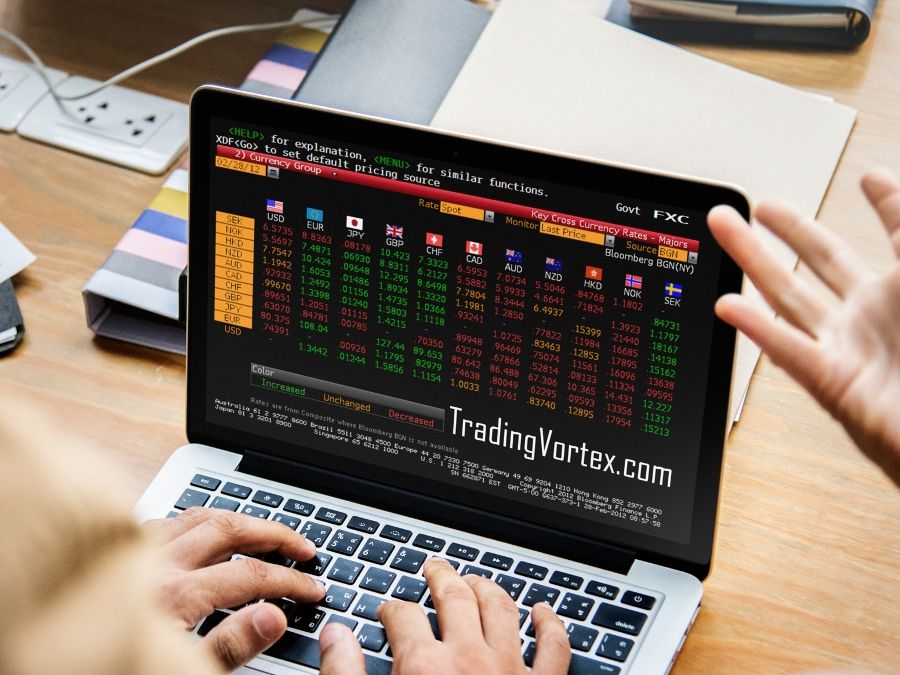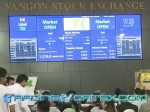Table Of Contents:
- What Is Forex Trading?
What Are Pips?
Calculating Pips:
Why Are Pips Important in Forex?
How to Read Currency Pair Quotes?
Pips and Profit/Loss Calculation:
The Role of Pips in Trading Strategies:
Factors Affecting Pip Values:
Pips and Different Currency Pairs:
Pip-Related Terminology:
Common Pitfalls and Misconceptions:
Conclusion:
What Is Forex Trading?
Brief Overview of the Forex Market:
The foreign exchange market, often referred to as the forex market or FX market, is the largest and most liquid financial market globally. It serves as the marketplace where currencies are traded, and its sheer size dwarfs other financial markets like stocks or commodities. The forex market operates 24 hours a day, five days a week, making it accessible to traders from different time zones and allowing for continuous trading.
The primary participants in the forex market include banks, financial institutions, governments, corporations, and individual traders. What distinguishes forex from other markets is its decentralized nature; there is no central exchange, and trading occurs electronically over-the-counter (OTC). This decentralization results in a high level of liquidity, meaning that currencies can be bought and sold with ease and minimal price slippage.
Currency Pairs and Their Role:
At the core of forex trading are currency pairs. In essence, when you trade forex, you are simultaneously buying one currency and selling another. Currency pairs are divided into three main categories:
- Major Pairs: These involve the world's most liquid and widely traded currencies, such as the US Dollar (USD), Euro (EUR), Japanese Yen (JPY), British Pound (GBP), Swiss Franc (CHF), and Canadian Dollar (CAD). Major pairs typically have the highest trading volumes and tightest spreads.
- Minor Pairs: Also known as cross-currency pairs, these do not include the US Dollar but feature other major currencies. Examples include the EUR/GBP, AUD/JPY, and GBP/JPY. While they may have lower liquidity than major pairs, they can still provide ample trading opportunities.
- Exotic Pairs: Exotic currency pairs pair a major currency with a currency from a smaller or emerging market, like the USD/TRY (US Dollar/Turkish Lira) or EUR/SGD (Euro/Singapore Dollar). Exotic pairs tend to have wider spreads and lower liquidity, which can lead to more significant price fluctuations.
Why Forex Trading Is Popular:
Forex trading has gained immense popularity over the years for several compelling reasons:
- Accessibility: The forex market is accessible to nearly anyone with an internet connection and a trading account. This inclusivity has attracted traders from diverse backgrounds.
- Liquidity: As mentioned earlier, the forex market is exceptionally liquid, ensuring that traders can enter and exit positions with ease, even for large sums.
- Flexibility: The forex market operates 24 hours a day, five days a week, allowing traders to choose when and how they want to trade, aligning with their schedules.
- Leverage: Forex brokers offer leverage, allowing traders to control positions that are larger than their account balance. While this can amplify profits, it also increases risk, requiring prudent risk management.
- Diverse Trading Strategies: Traders can employ various strategies, from short-term scalping to long-term investing, to suit their preferences and risk tolerance.
In summary, forex trading is the art of buying and selling currencies in the global market. Understanding the forex market's basics, such as currency pairs and its popularity, is essential before diving into the intricacies of pips and how they play a pivotal role in forex trading.
What Are Pips?
Explaining the Term “Pip”:
To understand pips better, consider them as the equivalent of ticks in stock markets or points in futures markets. A pip is typically the last decimal place in the exchange rate for most currency pairs, except for those involving the Japanese Yen, where it is the second decimal place. "For example, if the EUR/USD currency pair moves from 1.1000 to 1.1001, it has moved one pip".
The Concept of Pipettes:
To accommodate more precise price movements, the concept of pipettes was introduced. A pipette is one-tenth of a pip, and it allows for even finer granularity when tracking currency price changes. In a price quote, a pipette is expressed as a fifth decimal place. "For instance, if the EUR/USD moves from 1.10000 to 1.10001, it has changed by one pipette".
Pipettes are particularly useful when dealing with currency pairs that have high volatility or when traders need to pinpoint very small price fluctuations accurately.
How Pips Are Expressed?
Pips are expressed in various ways depending on the broker and the currency pair being traded. Typically, pips are expressed in one of three formats:
- Standard Pips: In this format, a pip is represented as a whole number, such as 1, 10, or 100. "For instance, if the EUR/USD moves from 1.1000 to 1.1010, it has moved ten standard pips".
- Fractional Pips: Some brokers provide fractional pips to offer a more precise representation of price movements. Instead of rounding to the nearest whole number, they include the fifth decimal place as pipettes. "For example, if the EUR/USD moves from 1.10000 to 1.10005, it has moved five fractional pips".
- Points: In certain cases, especially with currency pairs involving the Japanese Yen (JPY), pips are referred to as "points." In this context, a pip is equivalent to a point. "For example, if the USD/JPY moves from 110.00 to 110.10, it has moved ten points or ten pips".
Understanding how pips are expressed is essential for interpreting price quotes, calculating profit and loss, and effectively managing your trades in the forex market. Pips are not just a measurement; they are the language of forex traders, facilitating precise communication about price movements and trade outcomes.
Calculating Pips:
The Formula for Calculating Pip Value:
Understanding how to calculate pip values is crucial for assessing potential profits and losses in forex trading. The pip value represents the monetary worth of each pip movement in a trade and varies based on the size of the trade (lot size) and the currency pair being traded. The formula for calculating pip value is relatively straightforward:
- Pip in Decimal Places: This is the number of decimal places the currency pair quote has. For most pairs, it's four decimal places, except for JPY pairs, which have two.
- Exchange Rate: This is the current exchange rate of the currency pair in question.
- Lot Size: Lot size refers to the volume or size of your trade. There are different lot sizes: standard, mini, and micro. Standard lots are typically 100,000 units of the base currency, mini lots are 10,000 units, and micro lots are 1,000 units.
To illustrate, let's calculate the pip value for a trade of one standard lot (100,000 units) of EUR/USD with an exchange rate of 1.1000, where the quote has four decimal places:
This means that for every pip movement in the EUR/USD pair, you gain or lose $9.09 when trading one standard lot.
Examples of Calculating Pips:
Let's explore a few examples to better understand how pip calculations work:
Example 1: Calculating Pips for EUR/USD.
Example 2: Calculating Pips for USD/JPY.
Example 3: Calculating Pips for GBP/CHF.
These examples demonstrate how traders use pip movements to assess their profit or loss in a trade. Pip calculations are essential not only for risk management but also for setting profit targets and stop-loss levels. By understanding pip values, traders can make informed decisions about trade sizes and potential returns while managing their exposure to market volatility.
Why Are Pips Important in Forex?
Pips as a Measure of Price Movement:
Pips serve as a universal language in the forex market, offering traders a standardized and concise way to measure price movements. Whether you're tracking major currency pairs like EUR/USD or exotic pairs like USD/TRY, pips provide a consistent measure of how much a currency's value has changed.
Pips are particularly crucial when analyzing price charts and technical indicators. Traders use pips to identify trends, support and resistance levels, and potential entry and exit points. The ability to quantify price changes in pips helps traders make informed decisions, regardless of the currency pair or timeframe they are trading.
Risk Management and Pips:
Effective risk management is paramount in forex trading, and pips play a central role in this aspect. By calculating the potential risk and reward in pips, traders can determine appropriate stop-loss and take-profit levels for their trades. This ensures that the amount at risk and the profit target are both expressed in a standardized unit, making risk assessment more straightforward.
Pips in Position Sizing:
Position sizing is a critical element of risk management, and it involves determining the appropriate trade size or lot size for a given account balance and risk tolerance. Pips are integral to this process because they help traders calculate the potential impact of price movements on their account.
When traders know the number of pips they are willing to risk on a trade, they can adjust their lot size accordingly:
Additionally, pip calculations are essential for managing leverage effectively. By understanding the potential pip movements and their impact on profits and losses, traders can make informed decisions about leverage ratios, ensuring that they don't overexpose themselves to the market's inherent volatility.
In summary, pips are the linchpin of effective risk management and position sizing in forex trading. They provide a standardized measure of price movement, allowing traders to assess risk, set appropriate stop-loss and take-profit levels, and determine the right position size for their trading strategies. Whether you are a novice or an experienced trader, mastering the concept of pips is essential for success in the dynamic world of forex trading.
How to Read Currency Pair Quotes?
Understanding the Bid-Ask Spread:
When examining currency pair quotes, you'll often come across two key prices: the bid and the ask. These prices represent the buying and selling prices for the currency pair and are the foundation of all forex trades. Understanding the bid-ask spread is essential for comprehending how forex quotes work.
- Bid Price: This is the price at which you can sell the base currency of the pair and buy the quote currency. It's the lower of the two prices and represents the maximum price a buyer is willing to pay for the currency pair at that moment.
- Ask Price: Conversely, the ask price is the price at which you can buy the base currency and sell the quote currency. It's the higher of the two prices and signifies the minimum price a seller is willing to accept.
The Role of Pips in Quotes:
Pips are integral to understanding and interpreting currency pair quotes. They represent the smallest price movement in a currency pair and determine how price changes are expressed. For most currency pairs, the last decimal place in the quote is equivalent to a pip.
When reading quotes, you'll often see the bid and ask prices expressed in pips. This is where pips play a crucial role in trade execution. The spread, which is the difference between the bid and ask prices, is also measured in pips and represents the cost of entering a trade. Understanding the spread in pips is vital for traders as it directly impacts the profitability of a trade.
Reading Forex Quotes Examples:
Let's explore a couple of examples to illustrate how to read forex quotes:
Example 1: EUR/USD Quote.
- Bid Price: 1.1200
- Ask Price: 1.1201
- Spread: 1 pip
Example 2: USD/JPY Quote.
- Bid Price: 110.50
- Ask Price: 110.55
- Spread: 5 pips
Reading and understanding currency pair quotes, including the bid-ask spread and the role of pips, is fundamental to successful forex trading. It enables traders to make informed decisions about when to enter or exit trades, assess trading costs, and ultimately navigate the complexities of the forex market with confidence.
Pips and Profit/Loss Calculation:
Calculating Profits and Losses in Pips:
Pips are at the heart of profit and loss (P&L) calculations in forex trading. When you enter a trade, the number of pips gained or lost directly correlates with your financial outcome. Understanding how to calculate profits and losses in pips is fundamental for assessing the success of a trade.
To calculate profits and losses in pips, you need to compare the entry and exit prices of your trade. The difference between these two prices, measured in pips, determines your gain or loss.
- If the exit price is higher than the entry price for a long trade, the difference represents your profit in pips.
- If the exit price is lower than the entry price for a long trade, the difference represents your loss in pips.
Currency Conversion and Pips:
In forex trading, traders often deal with multiple currencies. Therefore, it's important to consider currency conversion when calculating profits and losses in pips. Since your trading account may be denominated in a different currency than the currency pair you are trading, you need to convert the pip value back to your account's currency.
The Impact of Leverage on Pips:
Leverage is a double-edged sword in forex trading, and it can significantly impact the number of pips gained or lost per trade. Leverage allows traders to control larger positions than their account balance would typically allow. While this can amplify potential profits, it also magnifies potential losses.
When leverage is applied, the amount at risk is still measured in pips, but the actual financial impact is multiplied:
While leverage can be a powerful tool, it's essential to use it judiciously and be aware of the increased risk it entails. A small price movement against your position when using high leverage can result in substantial losses, emphasizing the importance of risk management.
In conclusion, pips are the cornerstone of profit and loss calculations in forex trading. They determine the financial outcome of each trade, and understanding how to calculate and convert pips is essential for evaluating trading performance accurately. Additionally, the use of leverage can magnify both profits and losses, underscoring the need for cautious risk management in the world of forex trading.
The Role of Pips in Trading Strategies:
Scalping and Pips:
Scalping is a high-frequency trading strategy where traders aim to profit from small price movements over short timeframes. Pips play a crucial role in scalping as they represent these minor price fluctuations that scalpers target. Scalpers often seek to capture just a few pips per trade but execute numerous trades within a day. They rely on tight spreads and quick execution to maximize their gains. Since scalping focuses on tiny price changes, the pip value and spread become even more critical for profitability.
Scalpers must have a deep understanding of pips and be adept at interpreting short-term price movements to identify entry and exit points accurately.
Day Trading and Pips:
Day trading involves opening and closing positions within the same trading day, aiming to capitalize on intraday price movements. Day traders often have specific pip targets for each trade. They may look to gain 20, 30, or more pips in a single trade, depending on their strategy and risk tolerance. The ability to read price charts, identify support and resistance levels, and calculate potential pip gains is essential for day traders.
Day trading strategies may involve technical analysis, chart patterns, and various indicators to determine entry and exit points, all of which are influenced by pip movements.
Swing Trading and Pips:
Swing trading is a medium-term strategy where traders aim to capture price swings over several days to weeks. While swing traders target larger price movements compared to scalpers and day traders, pips remain central to their strategy. Swing traders often look for opportunities to gain 100, 200, or more pips in a trade.
The identification of trend changes, chart patterns, and key support and resistance levels are critical for swing traders. Understanding the potential pip gains and losses helps them set profit targets and manage risk effectively.
Long-Term Investing and Pips:
Long-term investors in the forex market take a different approach, often looking beyond short-term price fluctuations. However, even for investors with a multi-month or multi-year horizon, pips still play a role. Investors may evaluate potential currency pairs based on fundamental analysis and economic factors. They assess long-term trends and may have pip targets for entry or exit points in their positions.
For example, an investor might believe that a particular currency pair is undervalued and expect it to appreciate by a few thousand pips over the course of several years. This long-term perspective guides their investment decisions.
In summary, pips are integral to various trading strategies in the forex market, whether you are a scalper, day trader, swing trader, or long-term investor. Pips serve as a measure of price movement, helping traders set targets, assess potential gains and losses, and make informed decisions aligned with their specific trading goals and timeframes. Understanding how pips fit into your chosen strategy is essential for success in the dynamic world of forex trading.
Factors Affecting Pip Values:
Volatility and Pips:
Volatility, the degree of price fluctuations in the market, is a critical factor influencing pip values. In more volatile markets, currency pairs tend to experience larger price movements, leading to higher pip values. Conversely, in less volatile markets, price movements are smaller, resulting in lower pip values.
Traders often need to adjust their trading strategies based on market volatility. In highly volatile conditions, they might widen their stop-loss and take-profit levels to account for larger price swings, whereas in low-volatility environments, they might tighten these levels to adapt to smaller price movements.
Liquidity and Pips:
Liquidity is another essential factor affecting pip values. Highly liquid currency pairs, such as major pairs like EUR/USD, tend to have lower spreads and more stable pip values. These pairs are characterized by a large number of buyers and sellers, making it easier to enter and exit positions without significant price slippage.
On the other hand, less liquid currency pairs, such as some exotic pairs, may have wider spreads and more variable pip values. Traders in these pairs need to be cautious about the potential for price gaps and increased trading costs due to less liquidity.
Economic Events and Pips:
Economic events and data releases can have a profound impact on pip values. Major economic announcements, such as interest rate decisions, employment reports, and GDP releases, can trigger significant price movements in the forex market. The extent of these price swings often depends on the outcome of the event relative to market expectations.
Traders need to be aware of economic events and their potential impact on pip values. "For example, a surprise interest rate hike by a central bank can lead to a sharp currency appreciation, resulting in a substantial number of pips gained or lost in a short period".
Additionally, geopolitical events, news, and global developments can also influence pip values. Events like political elections, trade agreements, and natural disasters can create sudden market volatility, leading to rapid changes in pip values.
In conclusion, various factors affect pip values in the forex market, making it crucial for traders to consider these elements when developing their trading strategies. Volatility and liquidity play pivotal roles in determining the size of price movements, while economic events and external factors can introduce sudden and significant changes in pip values. Successful forex traders remain vigilant, adapting their strategies to accommodate these dynamic variables and make informed decisions in a complex and ever-changing trading environment.
Pips and Different Currency Pairs:
Major Currency Pairs and Pips:
Major currency pairs are the most widely traded pairs in the forex market and consist of currencies from the world's largest and most stable economies. These pairs typically have the tightest spreads and the most liquidity. The pip values for major currency pairs are generally well-established and consistent.
- EUR/USD (Euro/US Dollar): This is one of the most popular currency pairs, and it's known for its high liquidity. Pip movements for EUR/USD are typically valued at $10 for a standard lot.
- USD/JPY (US Dollar/Japanese Yen): USD/JPY is characterized by its lower pip values due to the Japanese Yen's lower value. Each pip in USD/JPY is usually valued at $10 for a standard lot.
- GBP/USD (British Pound/US Dollar): Pip values for GBP/USD are also typically $10 for a standard lot.
- AUD/USD (Australian Dollar/US Dollar): Pip values for AUD/USD are around $10 for a standard lot.
Minor Currency Pairs and Pips:
Minor currency pairs, also known as cross-currency pairs, do not involve the US Dollar as one of the currencies. Instead, they pair two other major currencies or a major currency with a currency from a smaller or emerging market. Pip values for minor currency pairs can vary more widely compared to major pairs.
- EUR/GBP (Euro/British Pound): Pip values for EUR/GBP are typically around £6 for a standard lot when trading in GBP.
- AUD/JPY (Australian Dollar/Japanese Yen): Pip values for AUD/JPY are usually around ¥1,000 for a standard lot when trading in JPY.
Exotic Currency Pairs and Pips:
Exotic currency pairs involve one major currency and one currency from a smaller or less commonly traded economy. These pairs tend to have wider spreads and higher pip values, making them more volatile and riskier to trade.
- USD/TRY (US Dollar/Turkish Lira): Pip values for USD/TRY can be significantly higher due to the relative volatility of the Turkish Lira. Each pip can be worth several Turkish Lira.
- EUR/TRY (Euro/Turkish Lira): Similar to USD/TRY, pip values for EUR/TRY can also be substantial.
- USD/SGD (US Dollar/Singapore Dollar): Pip values for USD/SGD are typically higher due to the Singapore Dollar's strength. Each pip can be worth several Singapore Dollars.
It's essential for traders to be aware of the specific pip values for the currency pairs they are trading, as these values impact risk management, position sizing, and profit/loss calculations. Major pairs offer stability and consistency in pip values, while minor and exotic pairs can provide greater volatility and potentially higher pip gains or losses, but with added risk. Understanding the unique characteristics of each currency pair is a key aspect of successful forex trading.
Pip-Related Terminology:
Pip Spread:
The term "pip spread" refers to the difference between the bid and ask prices of a currency pair. It's essentially the cost of entering a trade in terms of pips. The spread is measured in pips, and it represents the brokerage or market maker's profit. A tighter spread is generally more favorable for traders, as it reduces the cost of entering and exiting positions.
Pip Value:
Pip value is a crucial concept for forex traders as it represents the monetary worth of each pip movement in a trade. Pip value depends on the size of the trade (lot size) and the currency pair being traded. It's calculated using the formula:
Pip value is essential for risk management and profit/loss calculations, allowing traders to assess potential gains or losses based on their trade size and the number of pips the currency pair moves.
Pip Risk:
Pip risk is a measure of the potential loss in pips that a trader is willing to tolerate in a trade. It's closely related to setting stop-loss orders, which are essential for risk management. By defining a specific pip risk, traders can determine where to place their stop-loss to limit potential losses in a trade.
Pip Count:
Pip count refers to the total number of pips a currency pair has moved during a specific period or within a trade. It's a measure of the price change over time and is used for various purposes, such as assessing the trend's strength or measuring volatility.
Traders often analyze pip counts on price charts to identify trends, support and resistance levels, and potential entry and exit points.
Understanding these pip-related terms is essential for traders to navigate the forex market effectively. They provide valuable insights into trading costs, profit potential, risk management, and technical analysis, helping traders make informed decisions in their pursuit of success in the world of forex trading.
Common Pitfalls and Misconceptions:
Misunderstanding Pip Movements:
One common pitfall among novice forex traders is misunderstanding the significance of pip movements. While pips are essential for measuring price changes, they do not inherently equate to profits or losses. Misinterpreting this can lead traders to overestimate potential gains or losses and make ill-informed trading decisions.
Overemphasis on Pips:
Another misconception is placing excessive emphasis on pips as the sole determinant of trading success. While pips are an essential part of risk management and trade analysis, focusing solely on the number of pips gained or lost can lead to neglecting other critical factors.
Successful forex trading requires a holistic approach that considers risk-reward ratios, market analysis, trading strategies, and overall portfolio management. Overemphasizing pips may result in traders ignoring these crucial aspects and making impulsive decisions based solely on pip movements.
Emotional Impact of Pips:
Pips can have a significant emotional impact on traders, especially beginners. Large pip movements, whether in favor or against a trade, can trigger fear, greed, and impulsive decision-making. Traders may prematurely exit winning trades to secure a few pips or hold losing positions in the hope that the market will reverse.
This emotional rollercoaster can lead to poor trading outcomes and impede a trader's ability to stick to a well-thought-out trading plan. Managing the emotional aspect of trading is just as critical as understanding pips themselves. Traders must remain disciplined and avoid letting short-term pip fluctuations dictate their long-term trading strategies.
In conclusion, while pips are an essential element of forex trading, they can be a double-edged sword if not properly understood and managed. Avoiding common pitfalls and misconceptions, such as misinterpreting pip movements, overemphasizing pips, and succumbing to emotional reactions, is crucial for becoming a successful and disciplined forex trader. A balanced approach that incorporates pips within a broader trading framework is key to navigating the dynamic and challenging world of forex markets.
Conclusion:
Recap of Key Points:
In this comprehensive exploration of pips in forex trading, we've covered the essential aspects of this fundamental concept. We started by defining what pips are and delved into their role as a unit of measurement for price movements. We discussed how pips are expressed, calculated, and why they matter in various trading strategies.
Additionally, we examined factors that affect pip values, such as volatility, liquidity, and economic events. We explored how different currency pairs exhibit varying pip characteristics, and we introduced pip-related terminology crucial for understanding the forex market.
The Significance of Pips in Forex Trading:
Acknowledging the Limitations of Pips:
While we've emphasized the significance of pips in forex trading, it's crucial to acknowledge their limitations. Pips provide a standardized measure of price movements, but they don't tell the whole story.
The forex market is influenced by a multitude of factors, including economic indicators, geopolitical events, and central bank policies. These factors can lead to sudden and unpredictable price movements that go beyond the scope of pips. As traders, it's essential to recognize that successful trading requires a holistic understanding of the market, beyond just counting pips.
Moreover, pips don't account for the quality of your trading decisions, risk management strategies, or emotional discipline. While they offer a tangible metric for measuring price changes, they can't measure the skill, analysis, and psychology that go into making profitable trades.
In conclusion, while pips are a valuable tool in the forex trader's toolkit, they should be used in conjunction with a broader understanding of the market's complexities. Recognizing their limitations reminds us that successful trading encompasses a combination of technical expertise, risk management, and emotional resilience. As you continue your journey in forex trading, strive for a comprehensive approach that goes beyond the pip count and embraces the intricacies of this dynamic financial arena.

















